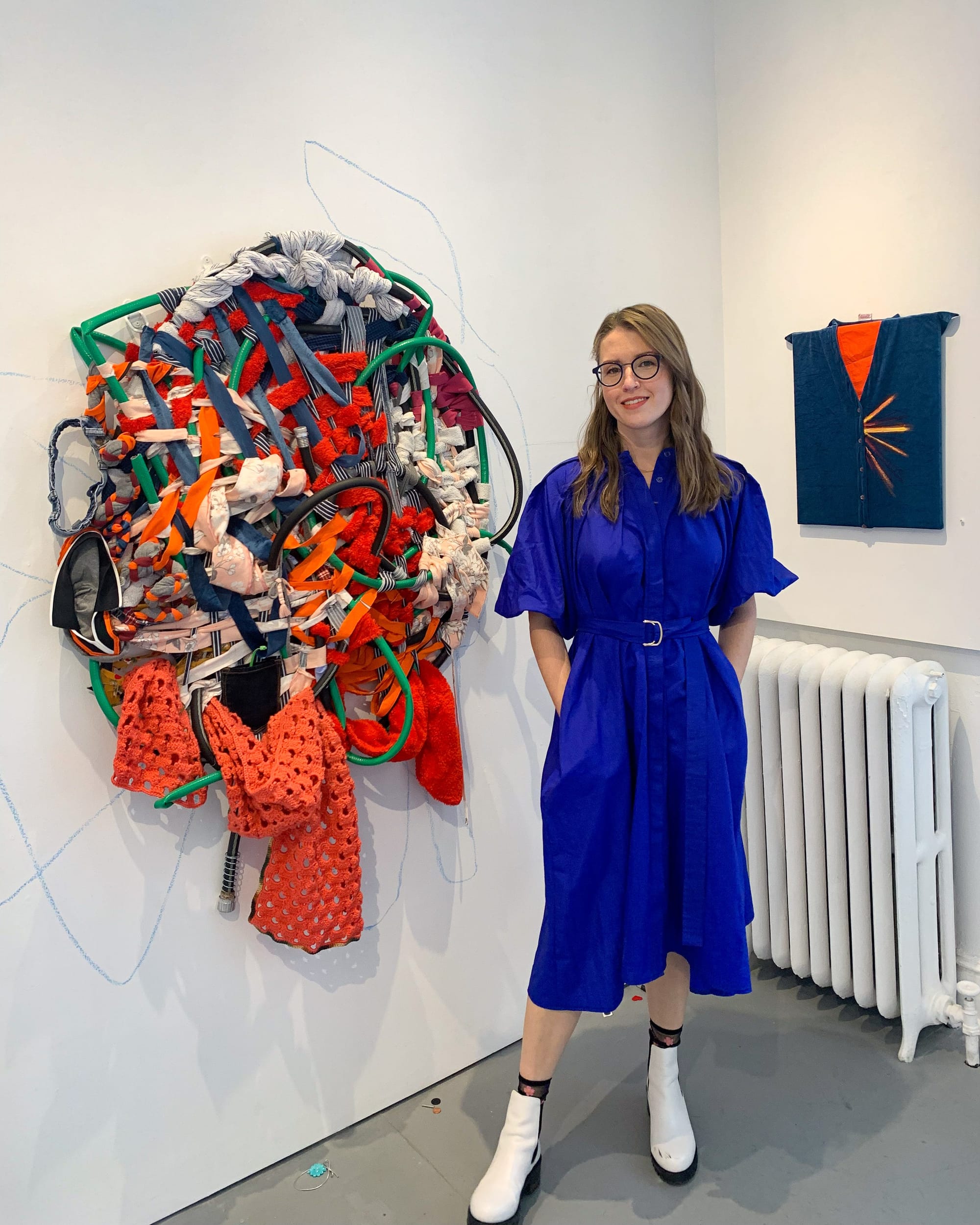A few months ago, I got an email with the subject line, “art exhibition inspired by your writing.” Of course, I clicked on it right away. And then I cried. I am just going to share a little of the email here,
Hi Meg!
I’m a visual artist living and working in Philadelphia. A while back I came across your beautiful, incredible piece What Happens to the People Who Survive the End of the World and it blew me away.
“I’ve never heard a scholar ask what it was like to be a mother during the collapse of the Bronze Age. But the question won’t leave me. Neither will the questions that follow it. How many mothers saw the cracks in the sky before everything fell down around them? What song did a mother sing as she rocked her baby to sleep while the sea peoples appeared over the horizon? What prayer did she pray in the morning when, despite everything, each day had a beginning? What hope did she whisper to her children before she had to leave them at the end of the world?” - What Happens to People Who Survive the End of the World
I am writing to let you know about a body of mixed media works I have created that will be exhibited at the Da Vinci Art Alliance in Philadelphia 3/1 - 3/19. The artwork in this exhibition is made from found and recycled materials. The bulk of the art pieces incorporate pockets- a nod to the way children tend to fill our pockets with the “treasures” they collect.
My family and I have been actively “treasure hunting” (collecting interesting bits of trash and found objects) for over a year now, in our South Philadelphia neighborhood. All these "treasures" will be available during the exhibition for visitors (including children) to handle, distribute and redistribute amongst the pockets.
I quoted your piece in my exhibition proposal because I felt it so beautifully captured the aching sense of love and dread and hope that I feel as a parent at this moment in time.
Sincerely,
Krista Dedrick-Lai
I was incredibly moved! And then when I googled Krista, I was astounded. I love her work! Like even if she wasn’t quoting me in a solo exhibition in one of the coolest cities in the country, I would still want to own a piece of her art. I especially adore This Wonderful Wildness is Our Only Hereafter and Peeling Back the Sky.
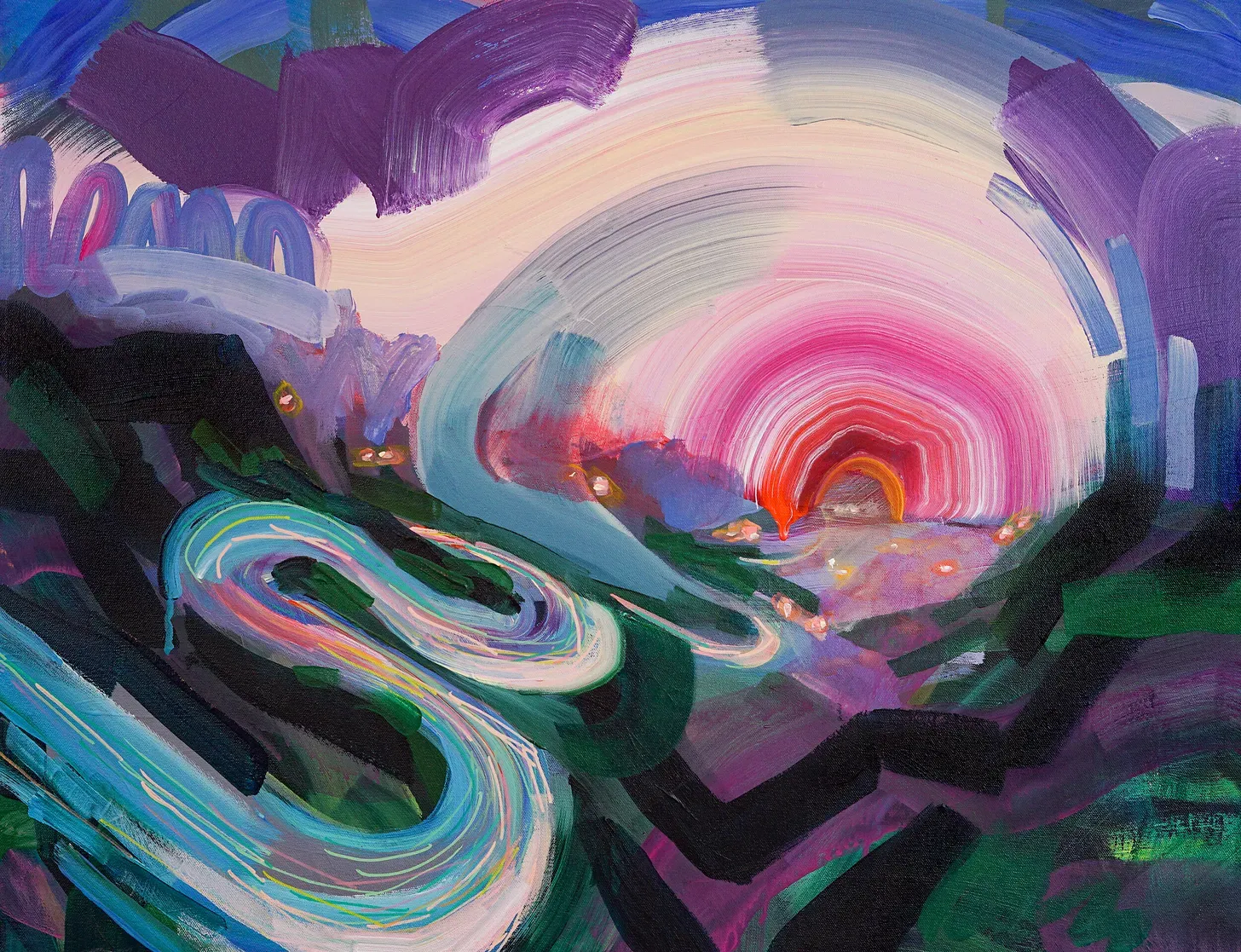
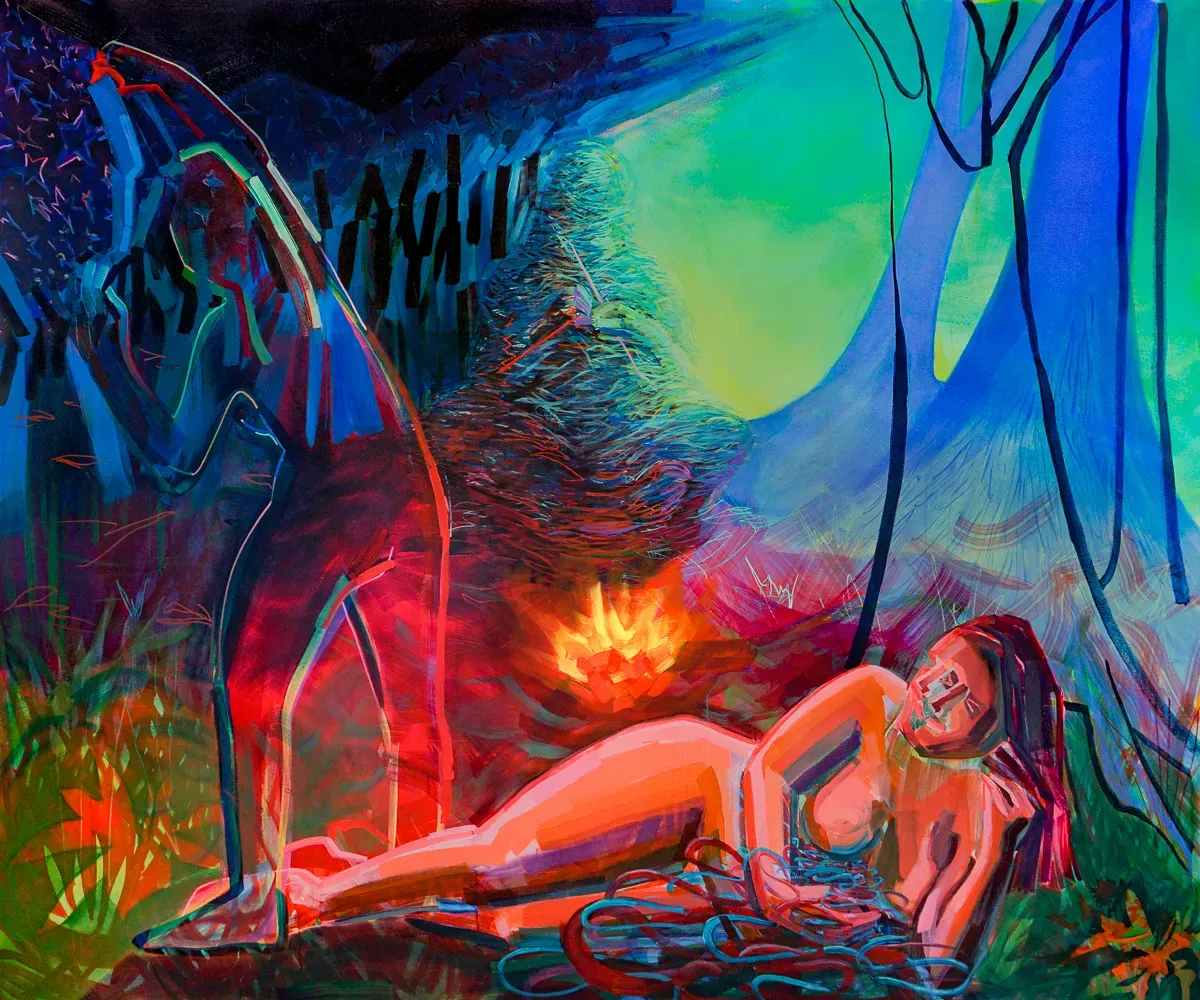
Krista’s solo show I’ll Carry It For You runs through Sunday. I can’t believe my words got to be a tiny part of it. I can’t believe my words get to be a tiny part of any of your lives and works! What a wonder!
I wish I could see I’ll Carry It For You and then eat cheesesteaks with Krista afterward. Instead, I got to do the next best thing - a homeculture Q+A! Krista’s answers are as dappled with hope and grief as her art. I am so pleased you’re going to get to sit with her thoughts on hope and grief. They’re just the kind of words that give rest, you know?
If you’re near Philadelphia, I hope you’ll go to the show before it closes. The essay Krista quoted only exists because you’ve supported my thinking and write in this space. And so it feels like you are being carried in Krista’s art too.
Visitors are encouraged to interact with the art. And you can make your own pocket to take out into the world for treasure collection. If you go, will you please email me a photo of you in the space? I’m at meg@megconley.com. It seems like a way to have a little newsletter family reunion, even though we’re all so far apart. Say hi to Krista for me. And if you’re both huggers, give her a hug too.
You can find Krista on Instagram and I encourage a scroll through her website.
Okay, here are the show details. And then on to the Q+A.
I'll Carry It for You: a solo exhibition by Krista Dedrick-Lai
Da Vinci Art Alliance, 704 Catharine Street, Philadelphia, PA 19147
Exhibition ends: March 19th
Family Fun morning: March 18th, 10:30am - 1pm
Gallery Hours: Wed-Sun, 11-5
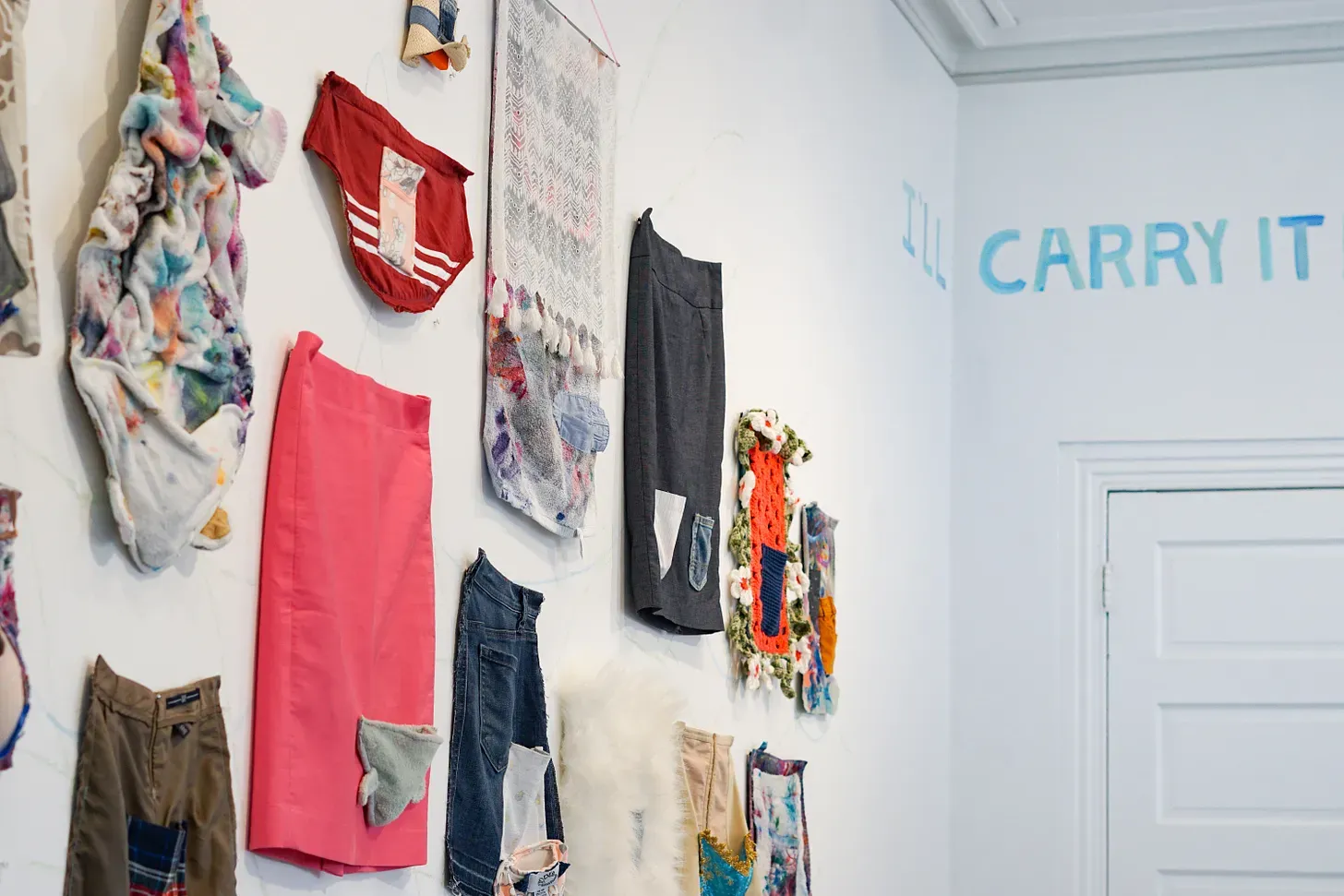
Krista, I am so excited to introduce your work to homeculture readers. I’d love for you to introduce yourself to them. And…I feel almost embarrassed even asking this next part of the question…but what led you to incorporate my words in your work?
Thank you so very much for your beautiful work and for your generosity in offering to have this dialogue! I feel so honored to be *speaking* with you and sharing with your audience.
I am a multi-disciplinary visual artist, which is to say I make artwork using a lot of different methods and materials. Primarily I am a painter though I also make collages, drawings, videos, weavings and sculpture. Generally speaking my work is informed by the everyday struggles of motherhood, domesticity, and being human.
I love bright colors, chunky mark-making, uneven textures and artwork that shows evidence of the human hand having been involved in its creation. I live in South Philadelphia with my partner and 5 year old child. For anyone familiar with Philly we are about a block away from the Italian Market and from Pat’s and Genos (the famous cheesesteak shops.)
A lot of what I am thinking about when I’m making artwork, whether that’s a painting or sculpture made of garden hoses and old clothes, is how to find a way through difficult circumstances or difficult feelings, into a place of light or beauty.
Some of this has to do with my personal history and experience with chronic illness. And a lot of it stems from being a human, and especially a parent, that is absolutely haunted by the climate crisis and everything that has caused it as well as everything that is unfolding from it. I think a lot about the world we are handing off to the next generation. In some ways being a parent right now is harder than it’s ever been.
We are doing the impossible every day with less support and more judgment than ever before.
Parents of our generation are doing the daily, grinding work of nurturing these precious little lives that parents have always done. But we are doing it under the added strain of a global pandemic, a skyrocketing wealth disparity and cost of living, outrageous corporate greed, an epidemic of school shootings, disinvestment in public schools, gender inequity and systemic racism that seem to be growing rather than shrinking, and the persistence of white, christian nationalism.
We are doing the impossible every day with less support and more judgment than ever before. There is so much more to be said about all of that but I’m sure you are aware: it gets really dark, really fast.
So ever since my son was born, 6 months into Donald Trump’s presidential term, I have been confronted with a lot of things that, due to my immense privilege as a white, American woman with an evangelical, middle class upbringing, I never had to confront before.
And the more I allowed myself to fully face the world I was sending my child into, that we are all sending the next generation of children into, the more I became filled with grief. And the grief kind of became immobilizing. But I still had a child to care for. The sun still came up every morning. So I started looking for a way through the grief and the dread. Because we only get one life.
I only get my child’s one childhood to enjoy him, as much as I can. I only have the limited days I have with him. And how can I have the stamina or resilience to fight for a better future for him if I’m just suffocating under this immense grief. So I started thinking about radical hope and radical joy. Things that less privileged people than me have had to contemplate for a long time. I am only just beginning to learn from them.
I started thinking about the way children teach us how to live in radically joyful and hopeful ways. They can experience such hardship and then go run around and laugh together. They can have a tantrum and then be playing happily a few minutes later.
And around that pivot point in time, I came across your essay What Happens to the People Who Survive the End Of the World and it just spoke exactly to that grief. The inevitability of being the mother who “sees the cracks appearing.” The mother who sees the world fall down around her and must reckon with the fact that the sun still rises over the destruction.
That line “what song did she sing to her children before she had to leave them, at the end of the world?” just made me weep. Other people have seen their world end before. Black Americans have experienced it over and over and over again.
I’m still searching for that “way through.” For now, all I can say of my personal conception of radical hope is: I don’t think it feels like “everything will be ok.” I think it feels like how you describe Thetis, in your essay, thinking, “Child you will die… but not like this.”
And I don’t think radical joy necessarily feels like happiness. Perhaps it feels like being mindfully present whenever we can keep the grief from crashing down on us. Perhaps it feels like allowing ourselves to be distracted from our sorrow for a moment by the humorous, the unexpected, the quirky and the beautiful.
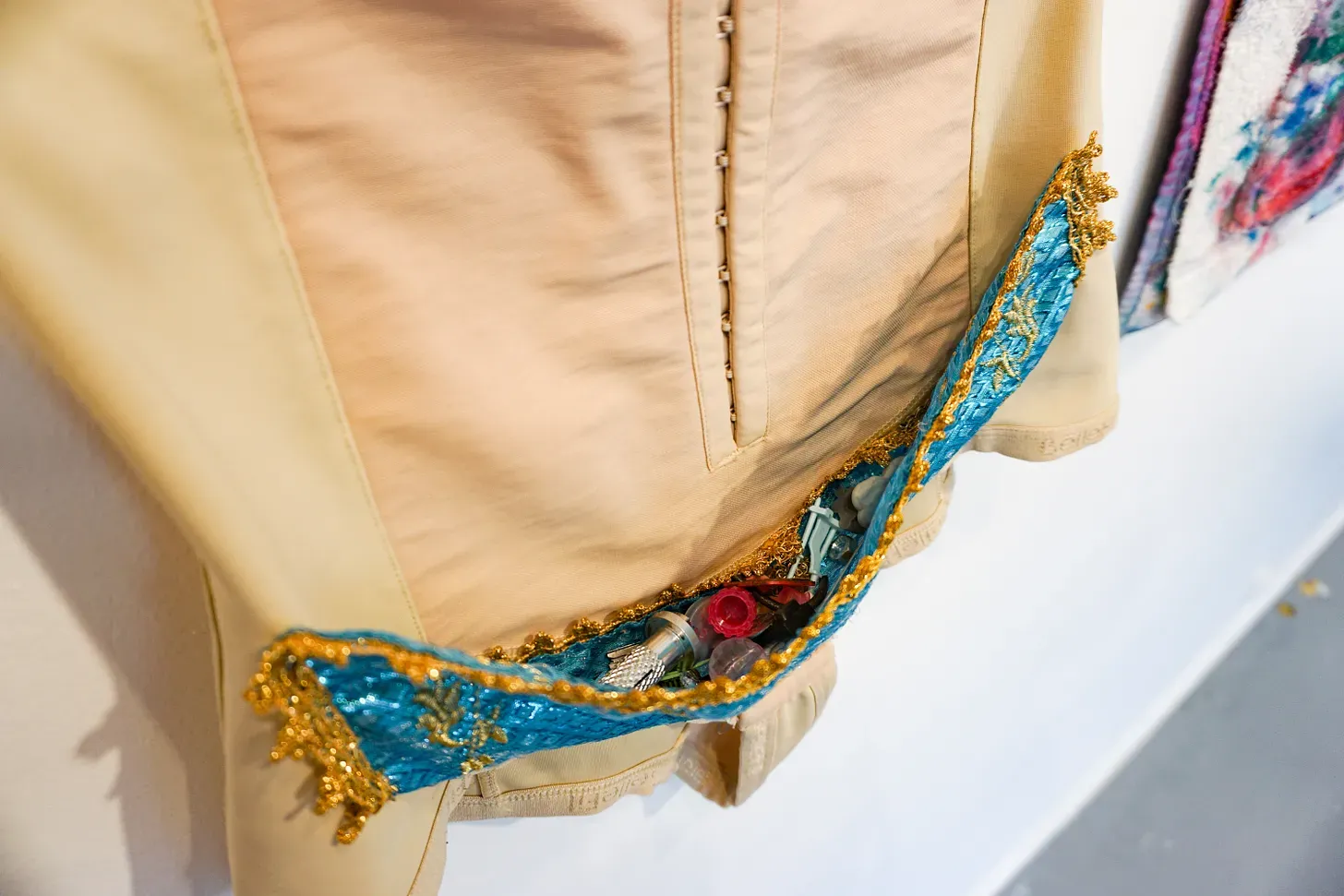
You talk about carrying the treasures your son picks up. On walks and in real life, my kids often pick up things that feel like trash to me. Like, there are things my kids are passionate about that I just do not like!
A big part of my parenting journey has been learning to carry their treasures like I treasure them, even when I do not. And then learning to treasure them because my kids do.
I want to hear a little bit about how you’ve learned to see the beauty in what your son treasures. How are you learning to hold things you’d usually throw away?
I’ve lived here for 25 years and I love Philly. Of course, the city has a lot of problems. One thing that gets me down as I go about my daily life is that we lack some services other cities have. So once you get out of Center City there can be a lot of trash. There are a ton more pressing issues here like struggling public schools, poverty and the opioid crisis, to name just a few. So clean streets are low on the priority list, understandably. Part of living here is learning to live with the trash.
But this environment is all my son has ever known. And as he started walking, he started picking things up that he found interesting. Beads, bits of plastic, barrettes, old keys. He finds the most amazing things that I would never even see. And at first I would just let him look… maybe sometimes I’d let him touch if it wasn’t too dirty. And he would talk to me about what he saw in it, and why he found it interesting. He would ask me so many questions about where it came from and what purpose it served.
Over time I just became so captivated by his fascination with these objects that it completely shifted their context for me. I began to allow him to bring them home and we started to refer to them as “treasures.”
I often have to set aside my gag reflex when things are covered in city dirt or grease or god-knows-what. We have a system now of bagging and washing and hand sanitizing. I guess what I’m trying to say is that we found “a way through.” We found a way through the trash and discouragement into a cherished family practice that brings us a lot of connection and joy.
And once I realized the transformative effect that my love for my child has had over this one small area of my life I started to wonder where else I could apply this lesson. And I wanted to share our joy with other people. I wanted other people to have that context-shifting joy of experiencing these items in a different way. So I created pockets to hold our treasures so that viewers can have a small version of that.
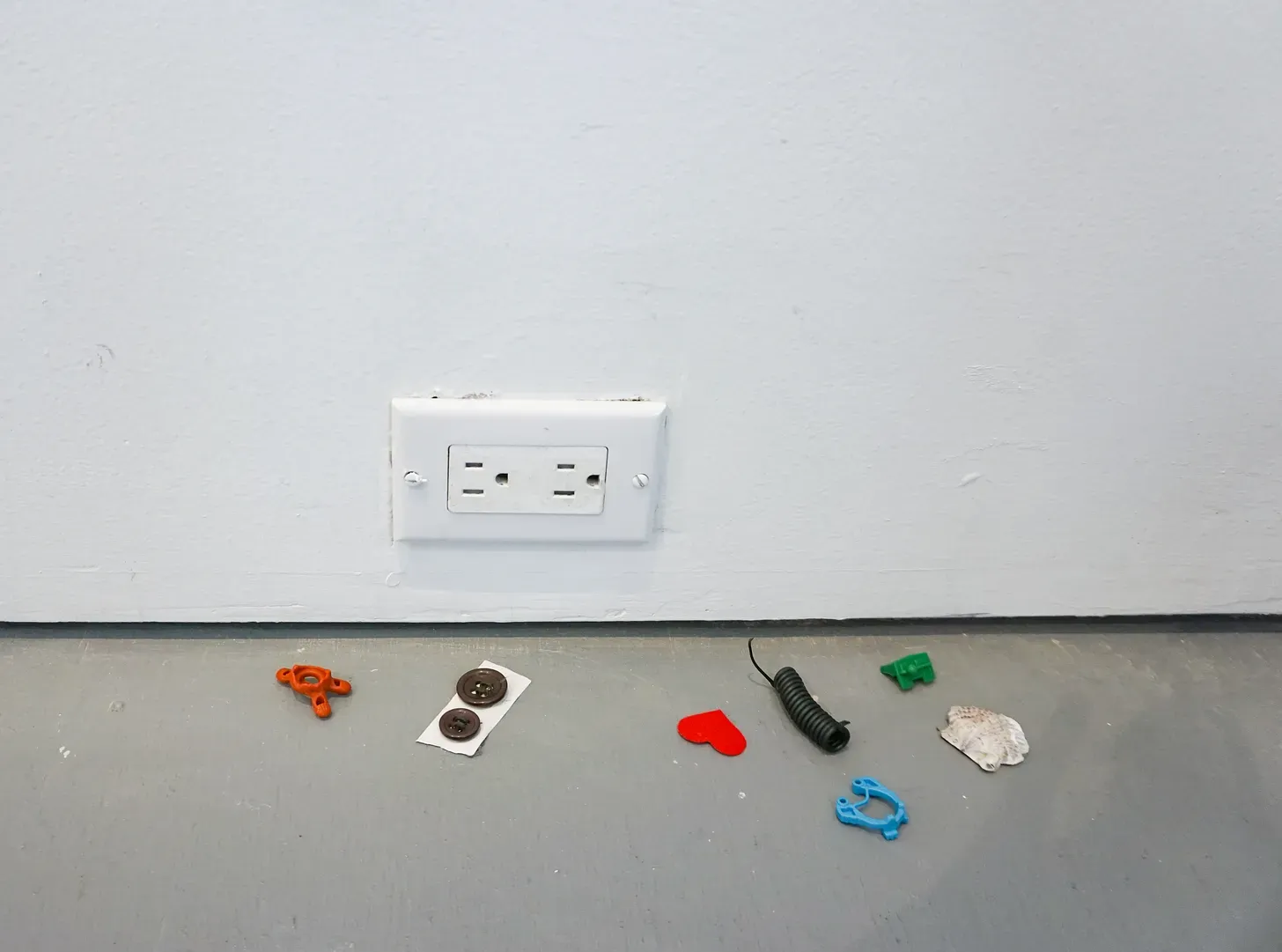
Your exhibit is so beautifully interactive. You invite people to “root through these pockets, inspect the treasures and redistribute them to other pockets.” I love that. Nothing is for keeps, except for our love. Which is something I am always trying to pass along to my kids.
Brontë’s windowsill is always full of the things she finds on our walks. And it’s really painful for her to consider that those little rocks, bits of bark and seeds won’t follow her everywhere. It’s been helpful to help her know that even though she can’t keep them, they will be kept. Some other kid will pick them up on some other walk someday.
Oh goodness, I really love that. Part of being human is reckoning with the grief of impermanence. I feel like, as a culture, if we could just allow ourselves to feel our grief on both a personal and communal scale, we would be so much better off. I’ve had to reckon with it a bit myself as I put these items out into a public space and invited others to touch.
I didn’t explicitly state that treasures could or could not be taken because I wanted to leave it up to the viewer. Some of the treasures have walked off, which is so very bittersweet. Because it meant enough to someone that they wanted to take it. And isn’t that the whole point? But now we don’t have it anymore and that is sad.
But at the same time we are collecting new items every day. There is an endless supply. One little girl made her own impromptu creation from a single earring, a bottle cap, and a plastic lens from sunglasses all wrapped together with pipe cleaners. She claimed and walked off with her creation with so much pride and gusto. It was amazing. I felt that small bite of loss and also joy at the same time. It was informative.
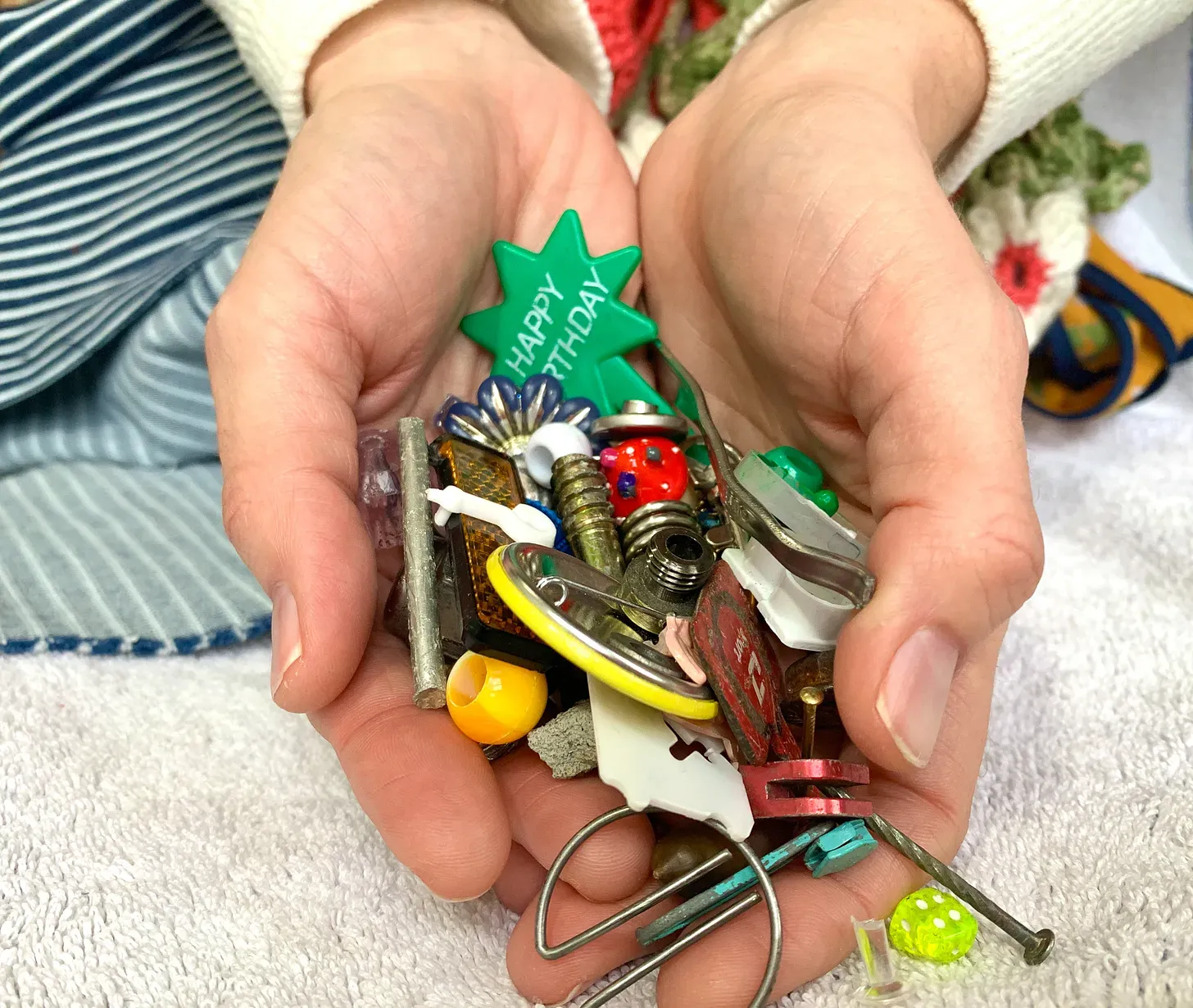
How does rooting, inspecting and redistributing apply to your work as an artist? Are paintings like pebbles you get to keep in your pocket for awhile?
I know that my words feel that way. As soon as I’ve hit publish, they’ve been redistributed in some manner and don’t really belong to me. You using my words in your exhibit, as a part of something better than I could have ever made, seems like one example of that!
I’d love to hear your thoughts on creativity, ownership and collaboration.
Wow, yes this exactly! With paintings I often have my own private meanings but once it is out in the world it takes on a different life or even multiple lives! I try to hold that loosely. I feel so similarly that once a work is out in the world, in whatever capacity, it doesn’t belong only to me anymore.
My son knows how bittersweet it is for me to sell or gift paintings, for example. He expresses a lot of compassion and care for me when it’s time to ship something out. But I always say, “I’m sad to see it go but I’m glad I can make room for all of the things I still want to make.”
And while I don’t agree that I have made something better than you could have (lol!) I am humbled and appreciative of that sentiment. But I think with this project, I’ll Carry It for You, more than with anything I’ve done before, I really am coming from a place of wanting to share.
I want to share comfort. Connection. Joy. Hope. Grief. And your essay so perfectly expressed where I was coming from in terms of contemplating and processing grief, but in a totally different medium. And I just really wanted to share it with more people. Both to help bring them closer to my work. But also so that they could be moved by it.
If you have any thoughts on art and motherhood - especially creating art that engages with motherhood, and how art that engages with motherhood is received by the art world - I’d love to hear them. It’s something I think about a lot as a writer and mother.
Allegedly it is more acceptable now to make work that is informed by being a mother and/or a woman. Artwork that has roots in craft (things like weaving, pottery, jewelry, etc) seems to be receiving more respect than ever before and that’s very encouraging. But there is still a huge disparity between men and womxn in terms of sales, representation and collection so I am hesitant to be too excited.
In the end I am making work for people like myself, so that they can see themselves reflected. And those are primarily the people who respond to my work. If other people don’t get it? I’m not really making it for them, so I try (as much as possible) to see that as their problem.
What are you carrying in your pockets/handbag right now? Literally and figuratively?
Ohhh man, that's such a good question!
Literally: In my coat pocket today I had a water bottle, a bunch of keys, two thick mittens and a big hat that says “South Philly” on it all jammed into two pockets as I ran errands on foot and took the subway. The hat fell out in a store but someone who worked there noticed and gave it back. In my handbag I have all the usual things along with a ziploc for treasures, wipes and hand sanitizer.
I recently finished washing a batch of treasures from my handbag that include a small wheel, a zipper pull, a bead, part of a teething ring and a small metal bracket of some kind. I also have a piece of a broken bracelet in my coat pocket. It was my grandmother’s and I’ve been wanting to add it to the treasure horde, but I keep forgetting.
Figuratively: I have so many ideas for paintings and for works that straddle the line between painting and weaving. I’m feeling awed and intimidated and excited to embark on a new body of work that only moves deeper into all these things we have been discussing.
